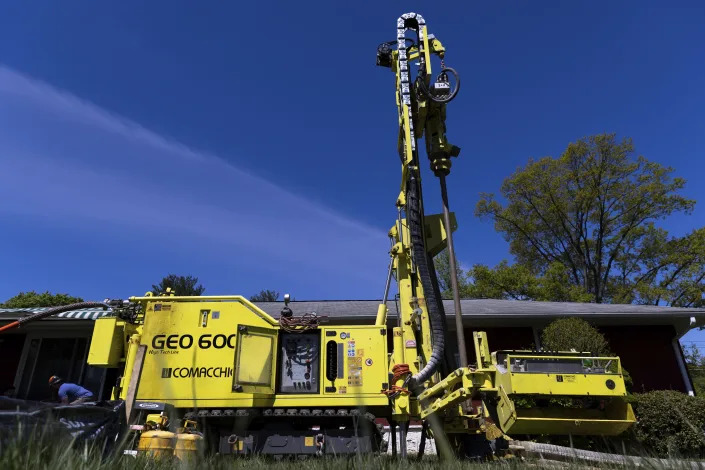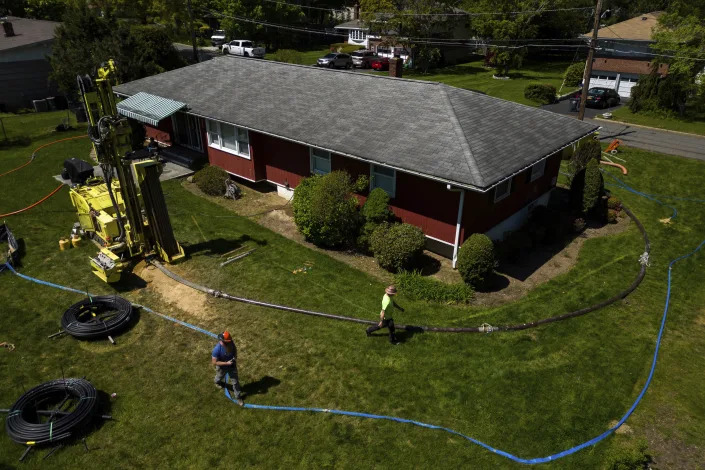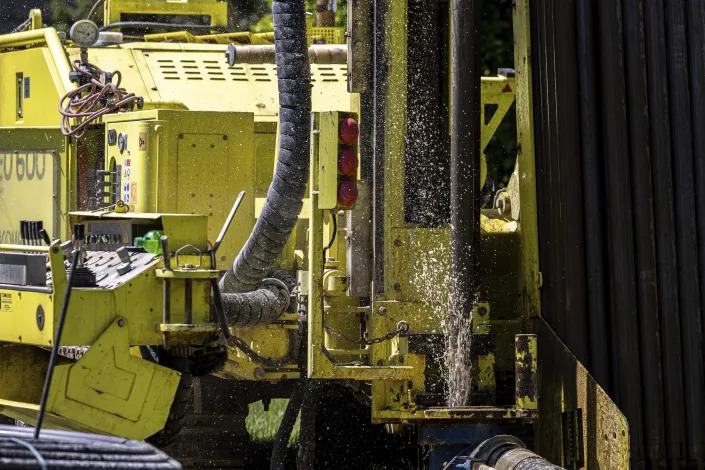
AI (Artificial Intelligence) letters and robot hand miniature
By Anna Tong
Thu, July 13, 2023
SAN FRANCISCO (Reuters) - In a frenzy unseen since the birth of social media in the early 2000s, investors are pouring billions into generative AI and fueling a startup boom in San Francisco.
At the same time, they are fueling hopes that the nascent AI sector will help revive the city's decaying downtown after the pandemic.
But the rapid growth of the artificial-intelligence business may not be a panacea for the city's economic and commercial real-estate woes, according to a dozen tech industry professionals interviewed by Reuters. Unlike past tech booms that have touched San Francisco, the generative AI craze brings fewer jobs, because AI firms excel at staying lean and automating work.
"I think we should curb our optimism that San Francisco commercial real estate will bounce back because of AI," said Silicon Valley investor Jeremiah Owyang. "The mentality of AI startups is AI-first. So you get AI to do the job before humans do it."
Eleven of the country's top 20 AI companies are in San Francisco and have raised $15.7 billion collectively between 2008 and 2023. However, they employ a total of only 3,400 people in the city, according to an analysis from San Francisco Mayor London Breed's office which used data from venture capital firm NFX.
That amount is just 2.3% of the estimated 150,000 daily workers that downtown San Francisco lost during the pandemic. Office workers accounted for nearly three-quarters of the city's gross domestic product before COVID-19 hit.
Generative AI, which learns from past data to create brand new content, is seen as a game-changer for workplace efficiency, especially for software engineers, the bread and butter of San Francisco's tech workforce. AI has already reshaped their work: according to research from popular code hosting platform GitHub, 92% of software developers use AI, and developers that used GitHub's coding assistant were able to complete a coding task 55% faster.
"These (AI) companies almost certainly won't have thousands of employees and corporate cafeterias, like Airbnb or Dropbox," said Erin Price-Wright, a partner at San Francisco-based Index Ventures. Airbnb and Dropbox, both based in San Francisco, employ about 10,000 people combined.
In contrast, Microsoft-backed OpenAI, which developed the smash-hit ChatGPT chatbot, has raised over $11 billion in eight years and has around 500 employees, according to the company. Headquartered in the city's hipster Mission district, the company uses AI to help solve its problems.
For instance, when faced with a deluge of support tickets, OpenAI chose to train its own AI to help its staff answer these tickets more efficiently, according to an OpenAI employee with direct knowledge of the project.
A spokesperson for OpenAI said the company uses its products to help with its work, but is also actively recruiting, including in customer support.
"We are getting to the point where AI can function as a real employee," said Matt Schlicht, CEO of Octane AI, which tailors online shopping to a person's needs. "Within your lifetime, you will likely see a one-person team start a billion-dollar company."
THREE AI EVENTS PER DAY
San Francisco, even as it battles societal issues like drugs, homelessness and unaffordable housing, has gained a reputation as the "AI capital of the world," as the city's mayor recently called it.
For instance, Dubai-based entrepreneur Mike Grabowski told Reuters that in June he saw a tweet from Owyang, the Silicon Valley investor, which said, "In SF, there are 44 AI events in two weeks, about three a day."
Grabowski, who has started a company that uses AI to write content for social media influencers, hopped on a flight to San Francisco on the same day. Two days later, jetlagged but optimistic about meeting prospective investors, he went to an AI event hosted by Owyang, who said he received 560 applications to attend the meetup.
The excitement about AI is palpable at tech events in the city, reminiscent of the decade before the pandemic when companies like Alphabet's Google opened offices and startups colonized more industrial parts of town.
The "City by the Bay" became a tech hub coinciding with an eight-year tax break dubbed the "Twitter tax break" aimed at encouraging tech companies to relocate there.
Recently, though, San Francisco's problems have made headlines.
Office buildings are over 30% vacant, according to real estate firm CBRE, as people continue to work from home, venture capital firms choose calmer parts of town, and many large tech firms have slashed workforces. Ridership on the BART rapid-transit system in downtown San Francisco is still at one-third of pre-pandemic levels, according to city government data.
As the crises of drugs and homelessness have spiraled, tourists and business visitors have stayed away, pushing some hotels to the brink of default. Dismal foot traffic has prompted companies including Nordstrom to shut their downtown stores.
Some tech professionals think that in time, AI will still buoy the city's economy, even if it scripts a different destiny from the previous tech boom.
Since AI makes it easier to run a company, there will be more small firms hiring dozens of people, as opposed to a few big tech companies that previously hired thousands, said Lee Edwards, a technology investor at San Francisco-based Root VC.
Others think it will be more of the same, and that rewards from the technology will go to fewer people, exacerbating the inequality that already plagues California's third-largest city.
"Generative AI is even more concentrated than previous waves of digital technologies, and a handful of companies are going to be at the forefront," said Daron Acemoglu, an economist at the Massachusetts Institute of Technology who studies how technology affects inequality.
"Top executives and their upper cadre of engineers, programmers, managers are going to benefit a lot more."
(Reporting by Anna Tong in San Francisco; Editing by Sayantani Ghosh, Anna Driver and Matthew Lewis)


























